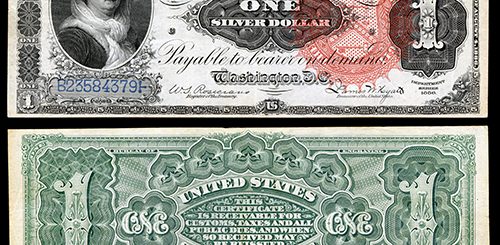How To Collect American Star Notes

The expression “star note” is used to describe the miniature star which replaces the final letter in American currency’s serial number. Other than this, star notes are the same as regular notes. The reason why star notes are so important however is due to rarity. For instance, experts have stated that the amount of U.S. bills which contain star notes are lower than 1% of all the bills which have ever been produced. As you can imagine, this means star notes carry a very high collection value.
The Origin of Star Notes
Star notes are used to replace notes that were damaged during printing. The process used to produce currency is not perfect, and sometimes misprints, smudges, or other blemishes will appear. When a bill is discovered to be damaged before the last printing phase where serial numbers must be added, it will be discarded. But sometimes damaged notes are discovered after serial numbers are added, and in this case they have to be replaced. This ensures that note counts remain precise.
Star notes first appeared in the U.S. in 1910. They were approved by the American Treasury and the practice has continued ever since then. Before the star note, the BEP, or Bureau of Engraving and Printing would have to reprint a note for replacement that had the identical serial number of the note that had been damaged, but as production amounts continued to grow, this process became too time consuming and was discontinued in favor of the star note system.
How Valuable Are The Star Notes?
The short answer is that it depends. American currency is subjective just like other collectibles. However, there are a number of things that will influence value, the most important of which is condition. Other things include the year of issue, serial number, population and district where it was printed. There are price guides on the internet which can give you a good idea of the value of a currency, and you can also visit a specialist to have it evaluated and appraised.
The condition of currency is measured in grades. Each of the grades has a specific criterion that has to be satisfied so that the bill can receive the grade. GEM uncirculated is the highest grade a bill can receive and essentially means it’s flawless. Bills with this grade display the same color, crispness and quality as the time of printing. It is centered precisely, with margins that are clean and it has no blemishes. As you can imagine, an old bill in this condition is extraordinarily valuable, and the older it is, the more valuable it will be. Other grades include CU (Crisp Uncirculated) which means the bill was never put in circulation and used in transactions, and EF, or Extremely Fine, meaning a new bill that is mostly crisp but does display a few signs of being handled. The lowest grade a note can receive is Good, which means that the bill is intact but small stains might be present. This is the condition that many extremely old bills (80 years+) will be in.


